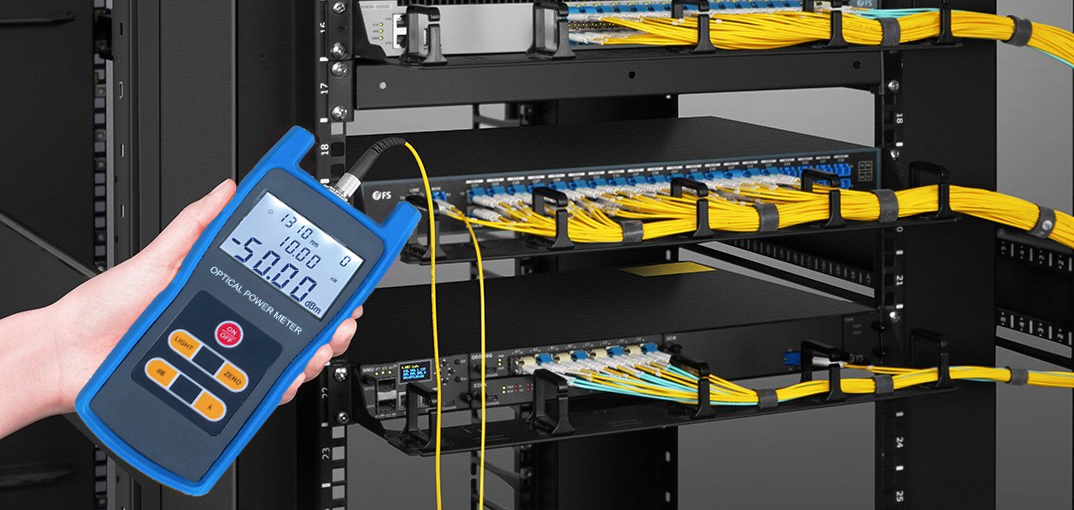High-performance fibre testing equipment ensures accurate material quality assessment.
High-performance fibre testing equipment ensures accurate material quality assessment.
Blog Article
Exploring the Advantages of Optical Fibre Examining for Boosted Communication Systems
The relevance of optical fibre testing in modern communication systems can not be overstated, as it offers as a structure for ensuring network reliability and efficiency. This positive screening method has extensive ramifications for signal top quality and operational efficiency, elevating the question of how these practices contribute to long-term sustainability in an ever-evolving technical landscape.
Significance of Optical Fibre Testing
The significance of optical fiber testing can not be overstated in today's data-driven environment. As organizations increasingly rely upon high-speed data transmission for everyday operations, the stability and efficiency of optical fiber networks are extremely important. Checking guarantees that these networks can sustain the substantial amounts of data generated and sent seamlessly, promoting effective communication and connectivity.
Optical fibre testing serves several crucial features, consisting of confirming setup top quality, recognizing possible faults, and determining overall system efficiency. Routine screening can avoid pricey downtimes and solution interruptions, allowing organizations to maintain operational continuity. It helps in compliance with sector requirements and regulations, making sure that fibre optic installations satisfy required specifications for safety and integrity.
Additionally, screening can boost the long life of fibre optic systems. By proactively identifying issues such as signal loss, depletion, or adapter failings, organizations can deal with troubles prior to they escalate, hence extending the life of their infrastructure. In summary, optical fiber testing is not simply a technological need yet a calculated investment that boosts network integrity, enhances performance, and inevitably sustains the growth and effectiveness of modern-day interaction systems.
Trick Testing Techniques

OTDR is a crucial technique made use of to recognize mistakes, action splice losses, and evaluate the total integrity of a fiber optic link. By sending out a pulse of light down the fiber and assessing the mirrored light, specialists can determine locations of faults and examine the network's efficiency over cross countries.
Insertion loss screening determines the quantity of signal loss that occurs when light go through a link or splice. This method is essential for validating that links satisfy specified loss thresholds, which is vital for preserving optimal performance in interaction systems.
Optical return loss screening quantifies the quantity of light mirrored back towards the resource due to blemishes in the fibre or connections. High return loss worths suggest far better performance and decreased signal degradation.
Together, these testing methods give a thorough analysis of fiber optic networks, guaranteeing their integrity and functionality in varied communication applications.
Influence On System Efficiency
Efficient optical fibre screening straight influences the total efficiency of interaction systems. By making certain the integrity of fibre optic cable televisions, screening identifies potential mistakes such as depletion, splice loss, and adapter imbalance. These concerns can dramatically degrade signal high quality, causing interruptions and reduced information transmission speeds.

Moreover, normal optical fiber testing adds to lasting system sustainability. It allows very early detection of wear and tear, enabling prompt maintenance and upgrades before significant failures happen. This not only prolongs the life-span of the infrastructure but also ensures that interaction systems continue to be affordable in regards to performance.
Cost-Effectiveness and Performance
Cost-effectiveness is a crucial consideration in the deployment and upkeep of optical fibre networks. Executing durable optical fiber testing procedures can dramatically decrease functional costs by determining problems before they rise right into significant troubles. ofda. By finding faults, depletion, and various other performance obstacles early, organizations can prevent expensive repair work and downtime, which can interrupt services and result in revenue loss
Furthermore, efficient testing techniques simplify the setup process, enabling service technicians to function better. This equates to lower work expenses and faster task completion times. Advanced screening equipment, such as Optical Time Domain Reflectometers (OTDRs), makes it possible for an accurate assessment of fibre high quality, making certain that just optimum materials are utilized, thereby minimizing waste.
Routine testing likewise adds to far better resource allocation. investigate this site By recognizing the network's efficiency, companies can make informed decisions about upgrades and developments, making certain that investments are made where they are most needed. In summary, optical fiber testing improves cost-effectiveness and performance, supporting the long-term sustainability and competitiveness of communication systems in a significantly demanding market.
Ensuring Long-Term Dependability
Carrying out strenuous optical fiber screening not only boosts price savings and operational performance however additionally plays a critical duty in guaranteeing the long-lasting dependability of interaction networks. Regular screening methods, consisting of depletion and bandwidth assessments, help identify possible destruction in fiber performance before it causes solution interruptions.
By employing advanced screening techniques, network operators can identify mistakes or weaknesses go to this site in the fiber infrastructure, enabling prompt remediation. This positive approach reduces downtime, ensuring that interaction systems remain practical and reliable. Normal testing contributes to the growth of a much more durable network, as operators can adjust and optimize their framework based on real-time information understandings.
Additionally, ensuring conformity with industry requirements through optical fibre testing strengthens the top quality and stability of the whole interaction system. This adherence not only strengthens confidence amongst stakeholders yet likewise aligns with regulative requirements, which are progressively stringent.
Verdict
In conclusion, optical fibre screening offers as an essential element in boosting communication systems. By using different screening techniques, such as OTDR and insertion loss assessments, networks can attain ideal performance and reliability.
Report this page